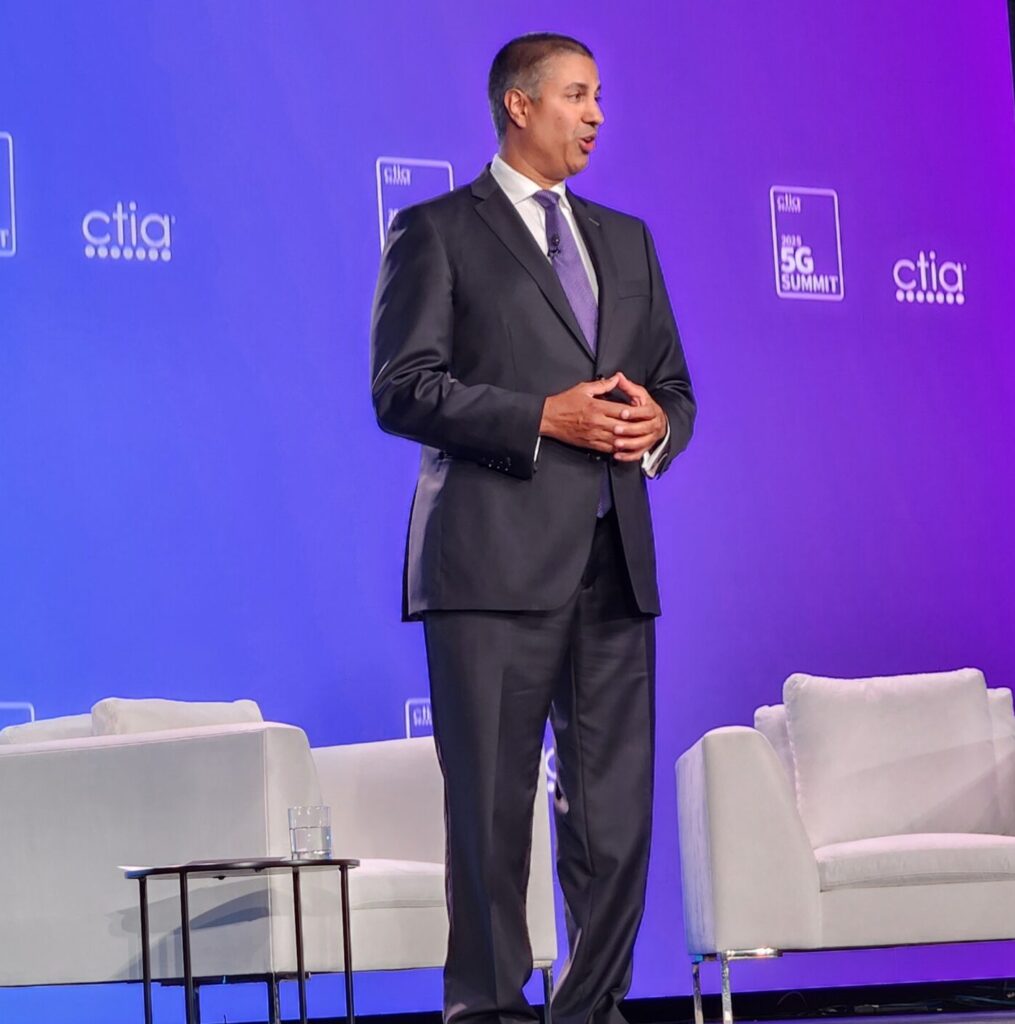FCC, CTIA emphasize challenging Chinese tech leadership in wireless, including spectrum
WASHINGTON, D.C.—Spectrum and artificial intelligence dominated the conversations at yesterday’s CTIA 5G Summit, with wireless positioned as a technology that cuts across industries and is fundamental for global technology and economic leadership, as well as national security.
“Countries that lead the world in wireless will lead in every technology-enabled sector that will define the next decade,” declared Ajit Pai, former FCC chairman during the first Trump administration, who took the stage as the new president and CEO of CTIA.

And what did Pai and other speakers—including new FCC Chair Brendan Carr—see as necessary for U.S. leadership in wireless? Restored authority for the Federal Communications Commission to auction spectrum; a new spectrum pipeline, with carriers’ preferred recipe of licensed, full-power and globally harmonized spectrum; and reduced regulations on infrastructure permitting.
The FCC continues to be hampered in its ability to auction spectrum, with its statutory auction authority having lapsed more than two years ago. Pai and other speakers once again called for that statutory authority to be restored by Congress. Pai called FCC spectrum auctions “arguably the most successful free market public sector innovation of all time” and a “core strategic asset for our nation.”
In addition to restoring auction authority, Pai said that the U.S. telecom industry needs “a clear spectrum pipeline, one shaped not by politics, but by physics. Not by self-interest, but by the national interest.” He added: “The national interest, by the way, is the consumer interest. We see it every day in our everyday lives. Americans love their phones.”
Carr joined Pai on the 5G Summit stage to discuss some of Carr’s policy priorities under the second Trump administration. Spectrum was a key part of that agenda, with Carr having already made initial moves on examining the potential for freeing up additional upper C-Band spectrum, re-auctioning some AWS-3 licenses (which the FCC was directed to do as part of the National Defense Authorization Act that was passed by Congress last year, to help fund the rip-and-replace program), plus looking at new rules for sharing in the 37 GHz band with the aim of spurring development and deployment.
“The reality is we have fallen deeply, deeply behind China when it comes to one of the most important features of national security economic growth, which is spectrum,” Carr said.
He went on to specifically highlight available full-power spectrum for 5G. “Right now, in the U.S., we have roughly 380 megahertz that are available for exclusive 5G, high-power use. China has four times that amount of spectrum. … We are far behind not just China, but we are 13 out of 15 when you look at leading economies in terms of available high-power, mid-band spectrum,” Carr said.
He also said that the playbook for achieving progress already exists—from the Pai chairmanship. Pai focused on rapidly making available C-Band spectrum which raised the most money of any FCC auction and became integral to carrier 5G networks and extending speed and capacity for new services such as 5G Fixed Wireless Access.
Carr also said that restoring FCC auction authority is “most important things we can do for the economy right now” and noted that auctions can also help pay for federal priorities of the new administration.
“It’s imperative we move more spectrum out there,” Carr said, later adding: “At the end of the day, what we’re running is a build agenda, whether it’s spectrum, infrastructure reform, deregulation, the space economy. Those are the contours of what we’re trying to get done right now.”
Carr also noted that during Pai’s tenure as FCC chair, there were reforms around small cells in terms of infrastructure permitting. “I think we need to take a look at expanding that relief to other forms of wireless and wired infrastructure,” Carr said. “I think that’s going to go a long way.” He specifically mentioned permitting on federal lands as historically difficult for siting.
In terms of AI, Carr invoked China’s DeepSeek and its censored responses as a “dystopian, ideological version of AI.” In order to support domestic AI development and U.S. leadership in AI, he went on to say, “we have to make sure that it works on our mobile networks. … When we think about the future of AI, when we think about the networks that we need to build, we need to have the spectrum necessary, the infrastructure necessary, so that AI can be mobile. And I think that’s really one of the key things for this industry, is to make sure that AI works on our smartphones.”

